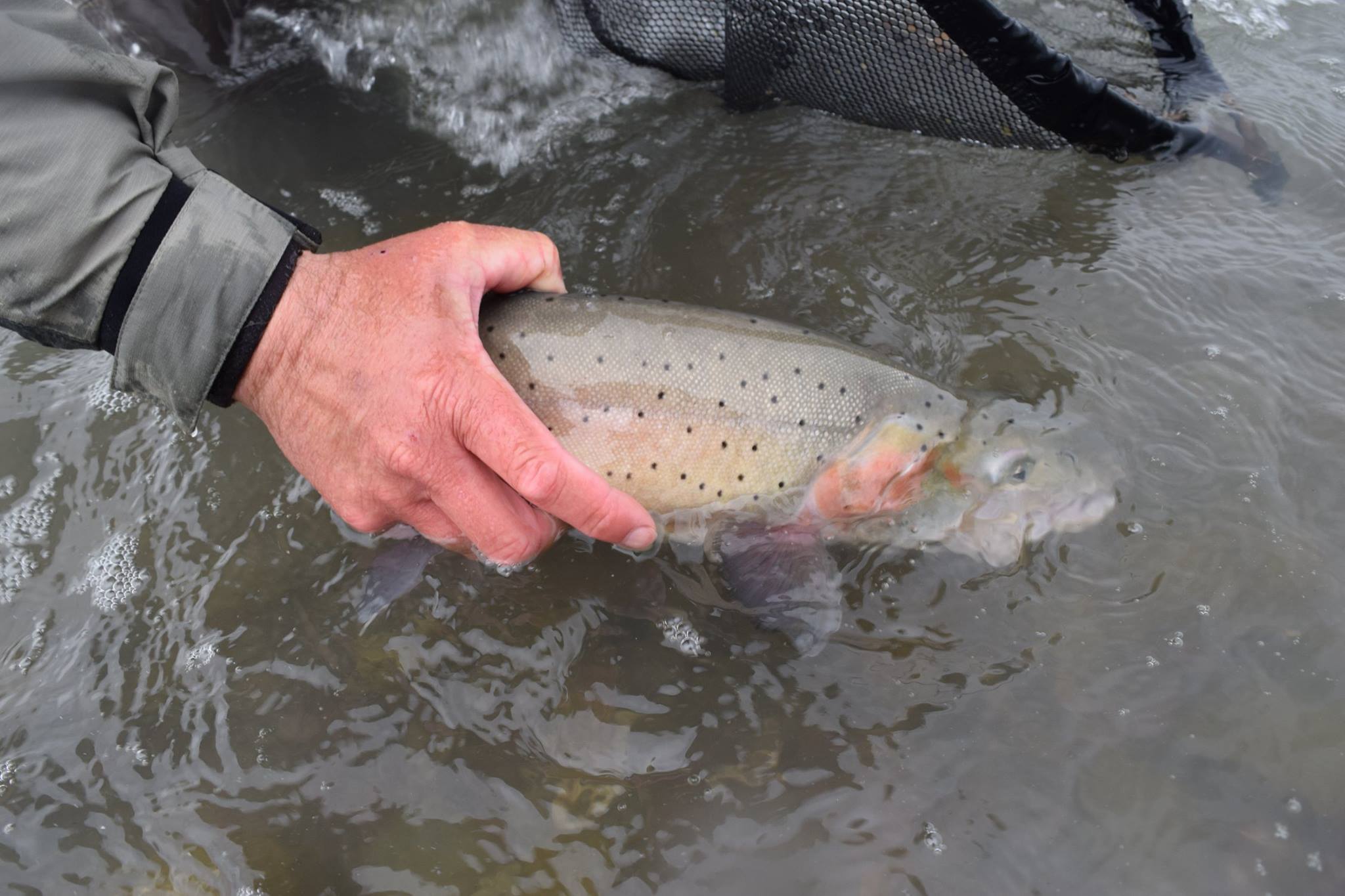Lahontan cutthroat trout (Oncorhynchus clarki henshawi)
Species Summary and Status: The Lahontan cutthroat trout is native to the Lahontan Basin of northern Nevada, northeastern California, and southeastern Oregon.
One of the oldest lineages of cutthroat trout, it originally inhabited the ancient Lahontan Basin at least several 100,000 years ago.
As of publication, 72 self-sustaining Lahontan populations currently exist in approximately 10.5 percent of historical habitat (752 stream miles and 1,394 surface acres); however, the majority of the existing populations are in smaller, isolated habitat fragments and/or have lower abundances due to poor habitat quality, and are likely not resilient in the long-term.
Within their historical range, approximately 68.3 percent of historical stream and lake habitat (7,457 miles and 372,330 surface acres, respectively) are potentially suitable habitats for Lahontan today, including currently occupied habitats.
This loss is due to climatic and anthropogenic factors over the last several hundred years that have resulted in either the complete loss of habitat or increased temperatures within habitats at lower elevations.
Looking Forward: Throughout the Lahontan cutthroat trout’s native range, nonprofit, state and federal agencies cooperatively work to increase genetic diversity, safeguard genetic purity, create interconnected metapopulations and work with private landowners, mainly agriculture and ranching community members, to encourage stabilization and growth of the species.
Both Jacob Stoller, Fisheries Biologist for Nevada Department of Wildlife (NDOW) and Jason Barnes, Lahontan Cutthroat Biologist for Trout Unlimited emphasized the importance of NDOW’s Safe Harbor Agreement Program for Lahontan Cutthroat Trout (SHA) as a net gain for LCT as management can be done on existing and damaged public lands, but gaining headway through public-private partnership offers true advancement potential.
“A lot of people talk about how laws, or funding are responsible for saving habitats or species. But there are a number of limitations to getting new populations started on the ground that way. On the other hand, a willing land owner is a crucial variable. They are the ones who are there on the ground every day and are the ones that make or break the habitat,” Barnes said.
Jacob Stoller noted that on the Marys River, an SHA has allowed for the removal of non-native Brook Trout which will allow for a connective meta-population in more than 130-stream miles.
Sources:
Trout Unlimited: State of the Trout
Lahontan Cutthroat Trout Coordinating Committee
Western Native Trout Initiative



